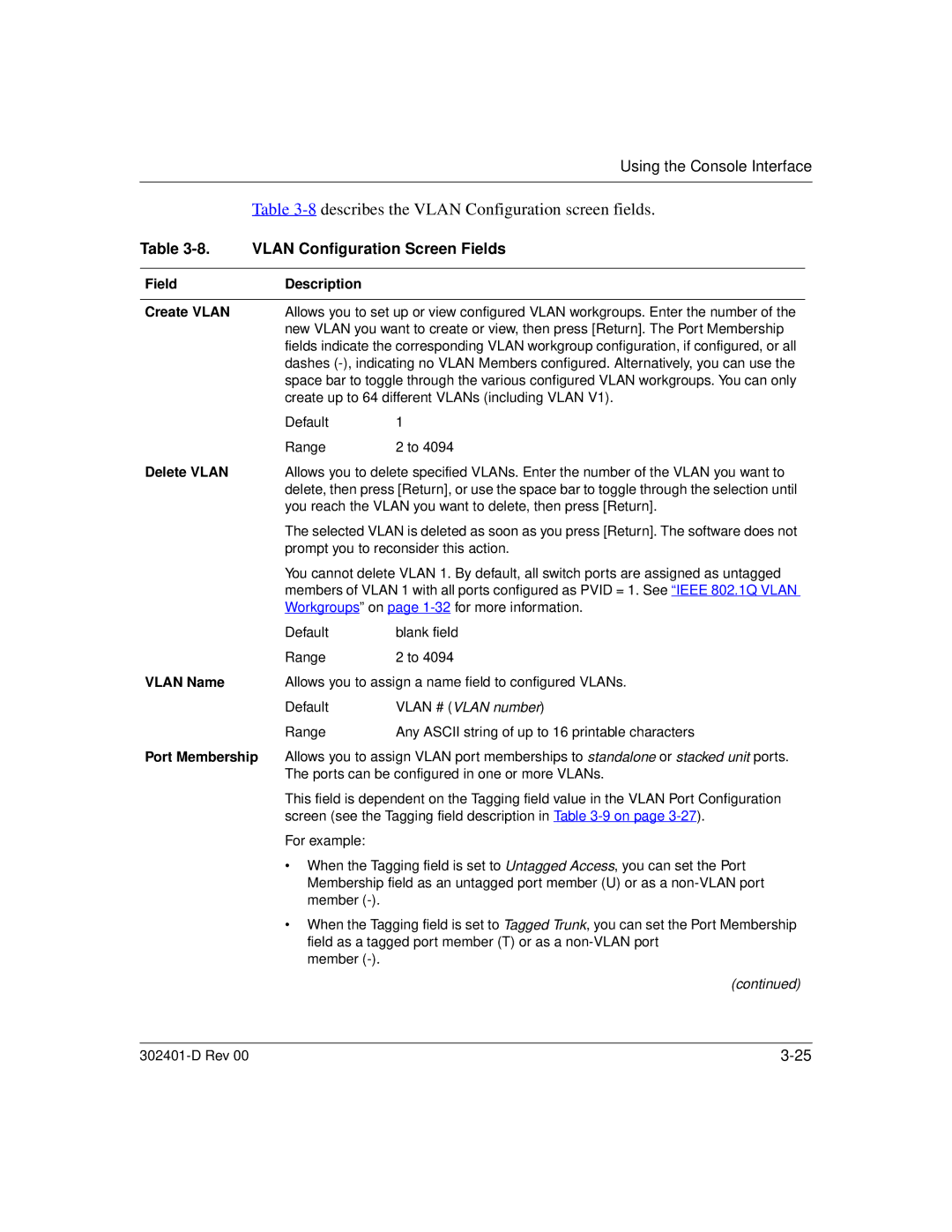|
| Using the Console Interface | |
|
|
| |
| Table | ||
Table | VLAN Configuration Screen Fields | ||
|
|
|
|
Field | Description |
|
|
|
|
| |
Create VLAN | Allows you to set up or view configured VLAN workgroups. Enter the number of the | ||
| new VLAN you want to create or view, then press [Return]. The Port Membership | ||
| fields indicate the corresponding VLAN workgroup configuration, if configured, or all | ||
| dashes | ||
| space bar to toggle through the various configured VLAN workgroups. You can only | ||
| create up to 64 different VLANs (including VLAN V1). | ||
| Default | 1 |
|
| Range | 2 to 4094 | |
Delete VLAN | Allows you to delete specified VLANs. Enter the number of the VLAN you want to | ||
| delete, then press [Return], or use the space bar to toggle through the selection until | ||
| you reach the VLAN you want to delete, then press [Return]. | ||
| The selected VLAN is deleted as soon as you press [Return]. The software does not | ||
| prompt you to reconsider this action. | ||
| You cannot delete VLAN 1. By default, all switch ports are assigned as untagged | ||
| members of VLAN 1 with all ports configured as PVID = 1. See “IEEE 802.1Q VLAN | ||
| Workgroups” on page | ||
| Default | blank field | |
| Range | 2 to 4094 | |
VLAN Name | Allows you to assign a name field to configured VLANs. | ||
| Default | VLAN # (VLAN number) | |
| Range | Any ASCII string of up to 16 printable characters | |
Port Membership Allows you to assign VLAN port memberships to standalone or stacked unit ports. The ports can be configured in one or more VLANs.
This field is dependent on the Tagging field value in the VLAN Port Configuration screen (see the Tagging field description in Table
For example:
•When the Tagging field is set to Untagged Access, you can set the Port Membership field as an untagged port member (U) or as a
•When the Tagging field is set to Tagged Trunk, you can set the Port Membership field as a tagged port member (T) or as a
member
(continued)
|
